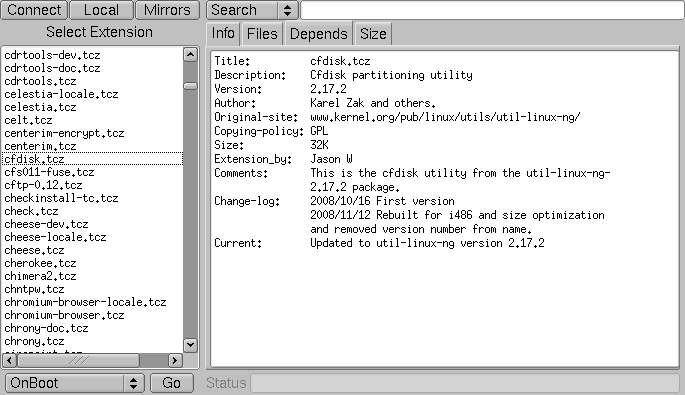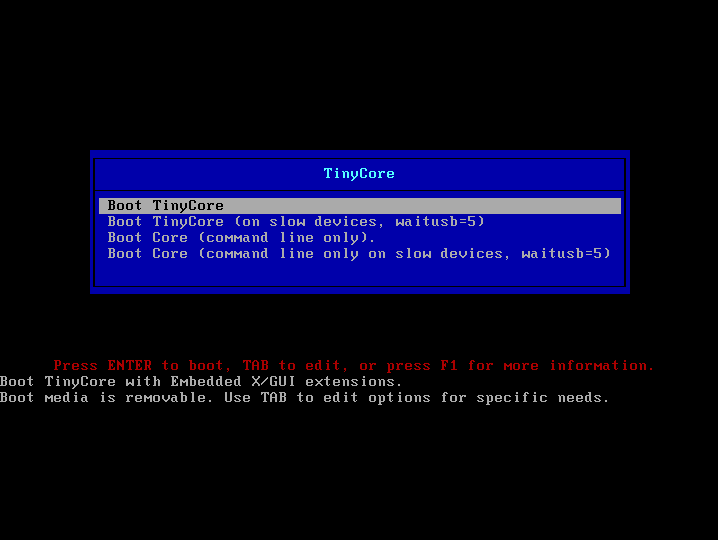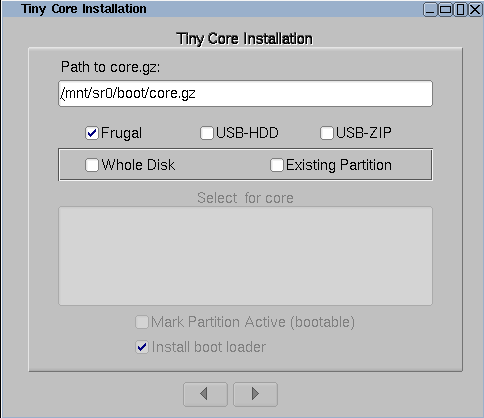

- #Create a tiny core linux usb for mac install#
- #Create a tiny core linux usb for mac pro#
- #Create a tiny core linux usb for mac software#
- #Create a tiny core linux usb for mac code#
#Create a tiny core linux usb for mac install#
in case of a typical install you have a pristine system after every reboot). So it's an awesome, clean, fairly easy to maintain distro (e.g. (And where people occasionally still think that "duh, you can probably only edit a text file in Linux".)
#Create a tiny core linux usb for mac pro#
And now I use it as my main workhorse in a field where typical setups consist of new-ish MacBooks with high-end SSDs and an up to date version of Pro Tools. But if you are a minimalist, I'd say it's a really solid system.Īlso, it's fun for me to think that I bought this Thinkpad T42 three years ago for €20. there is an older version of Chromium, but I suppose your main browser will be Dillo - which, actually, is just wonderful once you get used to it). Sure, you probably should be a "computational minimalist" by nature (e.g. (I just like to use old hardware until it dies - or, is this what old IPS-screened Thinkpads generally turn people into?) Granted, this is pushing it, but I've been using this setup every day for almost two years. Swapped the PATA HDD for a Compact Flash card - prior to this, everything was just surprisingly snappy thanks to Tiny Core Linux's RAM boot now the machine is also wonderfully quiet. I work with a Thinkpad T42 from circa 2004. I use it to produce 50-minute radio shows for my country's public broadcasting.
#Create a tiny core linux usb for mac software#
The few places where you get away with 100% ram and a read only store is embedded (generally, not always) and in these conditions you can closely tie software to kernel configuration. Ultimately just having swap enabled and assuming a back store is easier.
#Create a tiny core linux usb for mac code#
Which is difficult to know unless you wrote every piece of code FOR your custom kernel config. This is a strange condition because how you handle it depends on your kernel configuration, and how much stack you have left.

Ensure pages are backed before allocated, and running swap off can be done.īut then EVERY and let me repeat EVERY SINGLE piece of code you run has to able to handle malloc failing gracefully. This is because updating MMU is generally expensive, so it’s easier to mark an address as belonging to your process, and commit the pages after the fact. The reason for this is dealing with RAM being full. Generally all kernels will assume _some_ backing store. The answer you are looking for to your core question is “No”. Currently I use k/kdb+ for large files instead of UNIX sort. Sorting large files is something I do regularly so I am always open to new ideas. (Start a new thread if want to answer/debate this.) Aside: Did the architects of virtual memory contemplate a world where users are doing work without using HDDs or other writeable permanent storage. When one runs from RAM with no disk, working with large files means "thrashing" is a real possibility. Obviously BSD and other UNIX-like kernels date back to a time of severely constrained memory and are designed around space-saving concepts like "virtual memory" and "swap", "shared libraries", etc. Recently on HN a discussion of sorting came up, and I mentioned the issue of sorting large datasets using only RAM, no disk.

If I want distributions sets I download them they are not stored on the media. It has everything I need to do work, including custom applications. This filesystem on the media is not merely an "install" image. With todays RAM sizes, I can hold an entire "default base" (BSD) in memory if desired.

Depending on how much free RAM I have to spare, I can overlay larger userlands on top of this, and chroot into them. The USB stick or other boot media with the kernel+bootloader can be removed after boot. Size range is usually about 13-17MB for x86. I do not use Linux kernel, but like "tinycore" everything fits in RAM. Personally, I have been running my computers this way for many years now.


 0 kommentar(er)
0 kommentar(er)
